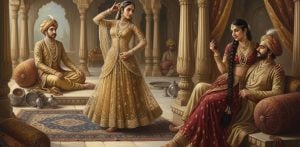"it's all about actually telling these stories."
Gurinder Singh Mann is not an ordinary historian; he is a leading name in Sikh historical studies.
The Leicester-born academic has dedicated his life to uncovering new insights into Sikh history.
Through his books, exhibitions, and public appearances, he has significantly shaped contemporary understanding of Sikh heritage.
Known for making Sikh history accessible to wider audiences, Mann is also the founder of the Sikh Museum Initiative.
But how did a boy from Leicester become one of the most influential voices in his field?
Early Life

Born in Leicester, Gurinder Singh Mann’s parents came to England from Punjab in the 1960s.
His father held a university degree, making his family background highly educated compared to most Sikh migrants at the time.
Going to school near Abbey Park, he described witnessing discrimination in the 1970s in Britain and seeing members of the National Front. However, he was always confident and had a belief in humanity.
Growing up, he said he only knew “little snippets of Sikhi”, noting that Sikh history books and Gurdwaras typically presented the same limited historical narratives.
Mann developed an interest in the history of world religions to understand life from multiple perspectives.
After completing a degree in management in London, his brother brought a book from India, JD Cunningham’s A History of the Sikhs, which he described as an inflexion point that sparked his interest.
This led Mann to return to Leicester and pursue a Master’s degree in South Asian religions in 1997.
Career

His dissertation, The Role of the Dasam Granth in Khalsa, was completed at De Montfort University, Leicester as part of his MA.
Gurinder Singh Mann’s work took a significant turn in 2006 when he discovered a rare English translation by Dr John Leyden of the Prem Sumurag Granth, an important historical Sikh text.
This finding deepened his engagement with early Sikh texts and influenced his first book, Sri Dasam Granth Sahib: Questions and Answers (2011), which addressed gaps in the existing literature on Sikh scripture.
This was followed in 2015 with The Granth of Guru Gobind Singh: Essays, Lectures and Translations, a work that revolutionised our understanding of Sikhism, Sikh history, and Sikh martial scripture.
Gurinder Singh Mann continued his scholarly contributions with The British and the Sikhs: Discovery, Warfare and Friendship c. 1700-1900, which was published in 2020.
The book examined the relationship between the British and Sikhs during the period of the Sikh Confederacy and the Sikh Empire under Maharajah Ranjit Singh as they encountered the expanding East India Company.
Mann explored how Christian missionaries attempted to convert Sikhs to British ways of thinking, the conflicts of the Anglo-Sikh Wars and the annexation of Punjab.
His 2022 book, The Rise of the Sikh Soldier, analysed the development of Sikh military methods from the time of the Gurus through the formation of the Khalsa, the Sikh Empire, and the Anglo-Sikh wars.
Mann said: “I’m a Sikh historian and, for me, it’s all about actually telling these stories.
“Whether it’s about the great Maharaja Ranjit Singh, about the Sikh Empire, but also in terms of this great relationship that the Sikhs have had with the British as well.
“This extends from the 18th Century effectively, so this story needs to be continued and it needs to be carried on throughout the ages as well.”
His Impact

What sets Gurinder Singh Mann apart is his commitment to making history publicly accessible.
Mann’s creation of the Sikh Museum Initiative and the Anglo Sikh Museum online has allowed the masses to view Sikh artefacts and history online.
He has worked with prestigious institutions including the Victoria and Albert Museum, the Royal Collection and the Royal Armouries.
Mann has taken his work into British homes with his appearances on BBC World Service and BBC Radio Leicester.
He was featured on BBC’s Celebrity Antiques Road Trip in 2017 to discuss his work on the Anglo Sikh wars.
Mann has surveyed the battlefields of the first Anglo-Sikh War and received recognition from the village of Aliwal in Punjab for doing so.
Furthermore, he played a leading role in erecting the statue of a Sikh soldier in Leicester’s Victoria Park, commemorating Sikh contributions in the World Wars.
This memorial stands as a significant landmark in one of Britain’s most diverse cities, honouring wartime sacrifices.
Mann thought it was “really important to have tangible things” to commemorate Sikh involvement in British history.
Similar statues, such as the Saragarhi Monument, which honoured the 36th Sikh Regiment of the British Indian Army in Wolverhampton, have also been erected.
Gurinder Singh Mann has taken his work to people who may not have had previous knowledge of Sikh history by lecturing at the likes of University College in Cork, Ireland.
Gurinder Singh Mann’s journey from a Sikh household in Leicester to becoming a prominent voice in historical scholarship represents the power of cultural preservation.
His contributions as a researcher, author, curator, and public intellectual have enhanced understanding of Sikh history and brought it to life for a wide audience.
As Gurinder Singh Mann continues to uncover and share the rich tapestry of Sikh heritage, his work stands as a testament to how dedicated scholarship can illuminate forgotten narratives.






























































